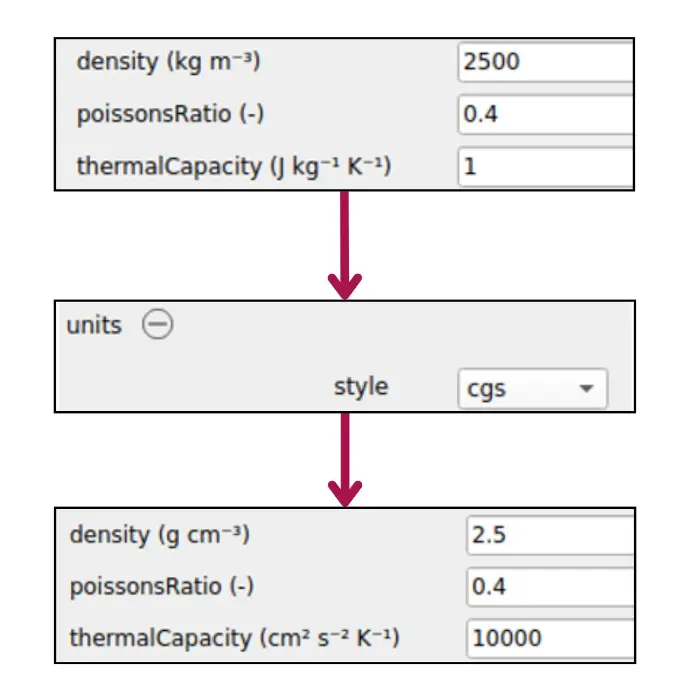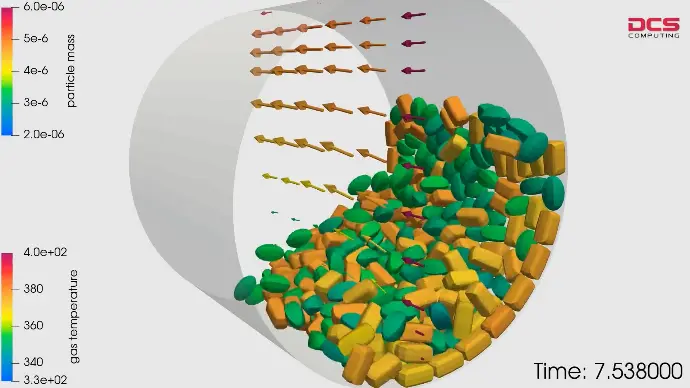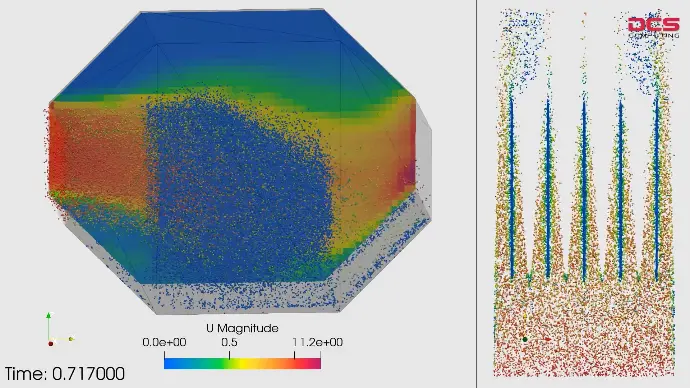Spray-Particle Volume and Mass Transfer
A new and powerful way to define particle compositions has been introduced.
Particles can now be defined by
- species concentrations
- individual species densities
- a composition-based particle template
With this improved modeling approach it is now possible to simulate multiphase mass transfer from droplets to particles.
The example shows the spray coating and drying of non-spherical particles in a rotating drum.
Electric Field Calculation and Tribocharging
A new coupled model for calculating the electric field of charged particles has been released.
The charge transfer model accounts for particle-particle and particle-wall interactions and guarantees accurate simulations of tribocharging and electrostatic behavior!
The animation shows the modification of particles' trajectories due to the Coulomb force within an electrostatic filter.
More Powerful Restart Files
Restarting simulations has become more convenient in the latest version of Aspherix®:
- The simulation domain configuration is stored by default
- Both particle & wall contact models can be modified when doing a restart (while maintaining history values)
- Meshes retain all their properties upon restart (position, velocity, etc.) regardless of attached mesh modulesso mesh modules can be switched seamlessly
The example shows a simulation where a force-responsive servo wall is used to compress a particle packing, which is then replaced by a rotating mesh at the same position.
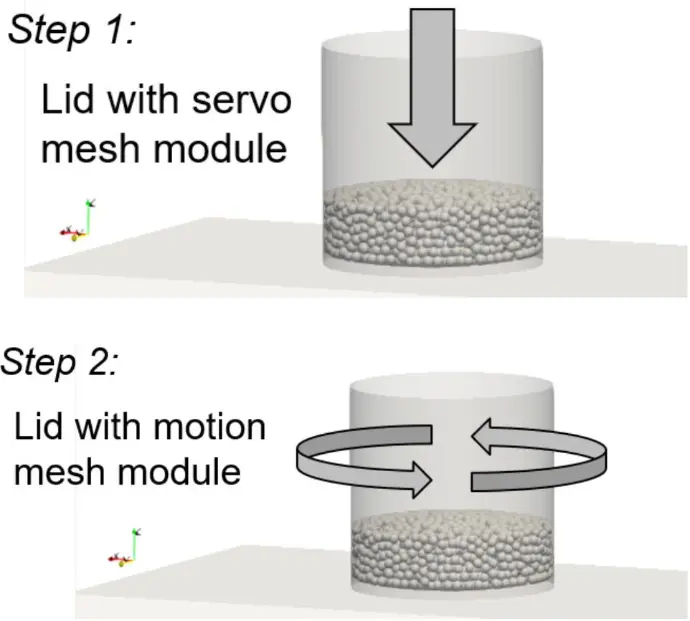
Scaling of the Simulation Domain After a Restart
The simulation domain can now be adapted flexibly in restarted simulations.
The contraction of the simulation domain allows for a better focus on smaller regions of interest - making simulations and post-processing faster & more efficient.
Other cases benefit from the possibility to extend the simulation domain after the initialisation, allowing for more flexibility also when it comes to the further usage of simulation results.
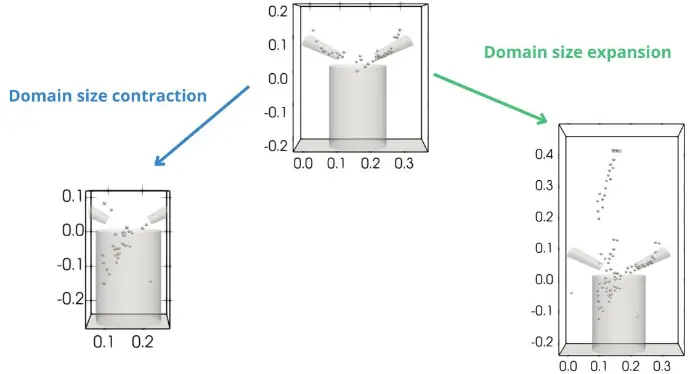
Dimensions and Units in the GUI
The GUI has been equipped with dimensions and units. Using the correct input values for parameters and properties is now much clearer and more intuitive.
The GUI now also automatically converts quantities when switching the unit system - no more manual conversions are required!
Several unit systems (SI, cgs, micro, ...) are provided.

